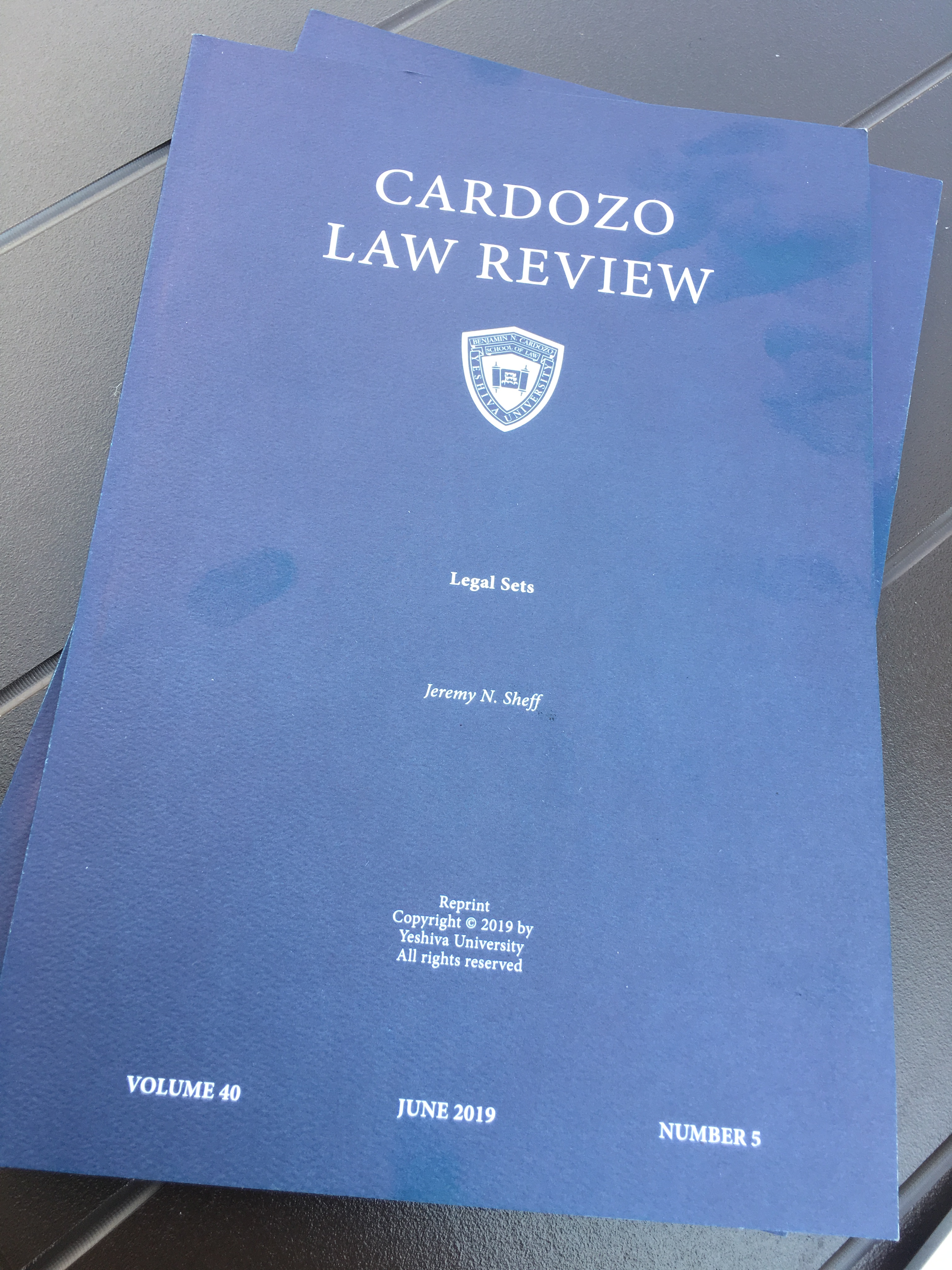One of the standard tropes of IP scholarship is that when it comes to knowledge goods, there is an inescapable tradeoff between incentives and access. IP gives innovators and creators some assurance that they will be able to recoup their investments, but at the cost of the deadweight losses and restriction of access that result from supracompetitive pricing. Alternative incentive regimes—such as government grants, prizes, and tax incentives—may simply recapitulate this tradeoff in other forms: providing open access to government-funded research, for example, may blunt the incentives that would otherwise spur creation of knowledge goods for which a monopolist would be able to extract significant private value through market transactions.
In “Innovation Policy Pluralism” (forthcoming Yale L. J.), Daniel Hemel and Lisa Larrimore Ouellette challenge this orthodoxy. They argue that the incentive and access effects of particular legal regimes are not necessarily a package deal. And in the process, they open up tremendous new potential for creative thinking about how legal regimes can and should support and disseminate new knowledge.
Building on their prior work on innovation incentives, Hemel and Ouellette note that such incentives may be set ex ante or ex post, by the government or by the market. (Draft at 8) Various governance regimes—IP, prizes, government grants, and tax incentives—offer policymakers “a tunable innovation-incentive component: i.e., each offers potential innovators a payoff structure that determines the extent to which she will bear R&D costs and the rewards she will receive contingent upon different project outcomes.” (Id. at 13-14)
The authors further contend that each of these governance regimes also entails a particular allocation mechanism—“the terms under which consumers and firms can gain access to knowledge goods.” (Id. at 14) The authors’ exploration of allocation mechanisms is not as rich as their earlier exploration of incentive structures—they note that allocation is a “spectrum” at one end of which is monopoly pricing and at the other end of which is open access. But further investigation of the details of allocation mechanisms may well be left to future work; the key point of this paper is that “the choice of innovation incentive and the choice of allocation mechanism are separable.” (Id., emphasis added) While the policy regimes most familiar to us tend to bundle a particular innovation incentive with a particular allocation mechanism, setting up the familiar tradeoff between incentives and access, Hemel and Ouellette argue that “policymakers can and sometimes do decouple these elements from one another.” (Id. at 15) They suggest three possible mechanisms for such de-coupling: mixing, matching, and layering.
By “matching,” the authors are primarily referring to the combination of IP-like innovation incentives with open-access allocation mechanisms, which allows policymakers “to leverage the informational value of monopoly power while achieving the allocative efficiency of open access.” For example, the government could “buy out” a patentee using some measure of the patent’s net present value and then dedicate the patent to the public domain. (Id. at 15-17) Conversely, policymakers could incentivize innovation with non-IP mechanisms while then channeling the resulting knowledge goods into a monopoly-seller market allocation mechanism. This, they argue, might be desirable where incentives are required for the commercialization of knowledge goods (such as drugs that require lengthy and expensive testing), as the Bayh-Dole Act was supposedly designed to provide. (Id. At 18-23) Intriguingly, they also suggest that such matching might be desirable in service to a “user-pays” distributive principle (Id. At 18) (More on that in a moment).
The second de-coupling strategy is “mixing.” Here, the focus is not so much on the relationships between incentives and allocation, but on the ways various incentive structures can be combined, or various allocation mechanisms can be combined. The incentives portion of this section (id. at 23-32) reads largely as an extention and refinement of Hemel’s and Ouellette’s earlier paper on incentive mechanisms, following the model of Suzanne Scotchmer and covering familiar ground on the information economics of incentive regimes. Their discussion of mixing allocation mechanisms (id. at 32-36)—for example by allowing monopolization but providing consumers with subsidies—is a bit less assured, but far more novel. They note that monopoly pricing seems normatively undesirable due to deadweight loss, but offer two justifications for it. The first, building on the work of Glen Weyl and Jean Tirole, is a second-order justification that piggybacks on the information economics of the authors’ incentives analysis. To wit: they suggest that allocating access according to price gives some market test of a knowledge good’s social value, so an appropriate incentive can be provided. (Id. at 33-34) Again, however, the authors’ second argument is intriguingly distributive: they suggest that for some knowledge goods—for example “a new yachting technology” enjoyed only by the wealthy—restricting access by imposing supracompetitive costs may help enforce a normatively attractive “user-pays” principle. (Id. at 33, 35)
The final de-coupling strategy, “layering,” involves different mechanisms operating at different levels of political organization. For example, while TRIPS imposes an IP regime at the supranational level, individual TRIPS member states may opt for non-IP incentive mechanisms or open access allocation mechanisms at the domestic level—as many states do with Bayh-Dole regimes and pharmaceutical delivery systems, respectively. (Id. at 36-39) This analysis builds on another of the authors’ previous papers, and again rests on a somewhat underspecified distributive rationale: layering regimes with IP at the supranational level may be desirable, Hemel and Ouellette argue, because it allows “signatory states commit to reaching an arrangement under which knowledge-good consumers share costs with knowledge-good producers” and “establish[es] a link between the benefits to the consumer state and the size of the transfer from the consumer state to the producer state” so that “no state ever needs to pay for knowledge goods it doesn’t use.” (Id. at 38, 39) What the argument does not include is any reason to think these features of the supranational IP regime are in fact normatively desirable.
Hemel’s and Ouellette’s article concludes with some helpful illustrations from the pharmaceutical industry of how matching, mixing, and layering operate in practice. (Id. at 39-45) These examples, and the theoretical framework underlying them, offer fresh ways of looking at our knowledge governance regimes. They demonstrate that incentives and access are not simple tradeoffs baked into those regimes—that they have some independence, and that we can tune them to suit our normative ends. They also offer tantalizing hints that those ends may—perhaps should—include norms regarding distribution.
What this article lacks, but strongly invites the IP academy to begin investigating, is an articulated normative theory of distribution. Distributive norms are an uncomfortable discussion for American legal academics—and especially American IP academics—who have almost uniformly been raised in the law-and-economics tradition. That tradition tends to bracket distributive questions and focus on questions of efficiency as to which—it is thought—all reasonable minds should agree. Such agreement is admittedly absent from distributive questions, and as a result we may simply lack the vocabulary, at present, to thoroughly discuss the implications of Hemel’s and Ouellette’s contributions. Their latest work suggests it may be time for our discipline to broaden its perspective on the social implications of knowledge creation.
 Published Version Available Here
Published Version Available Here

